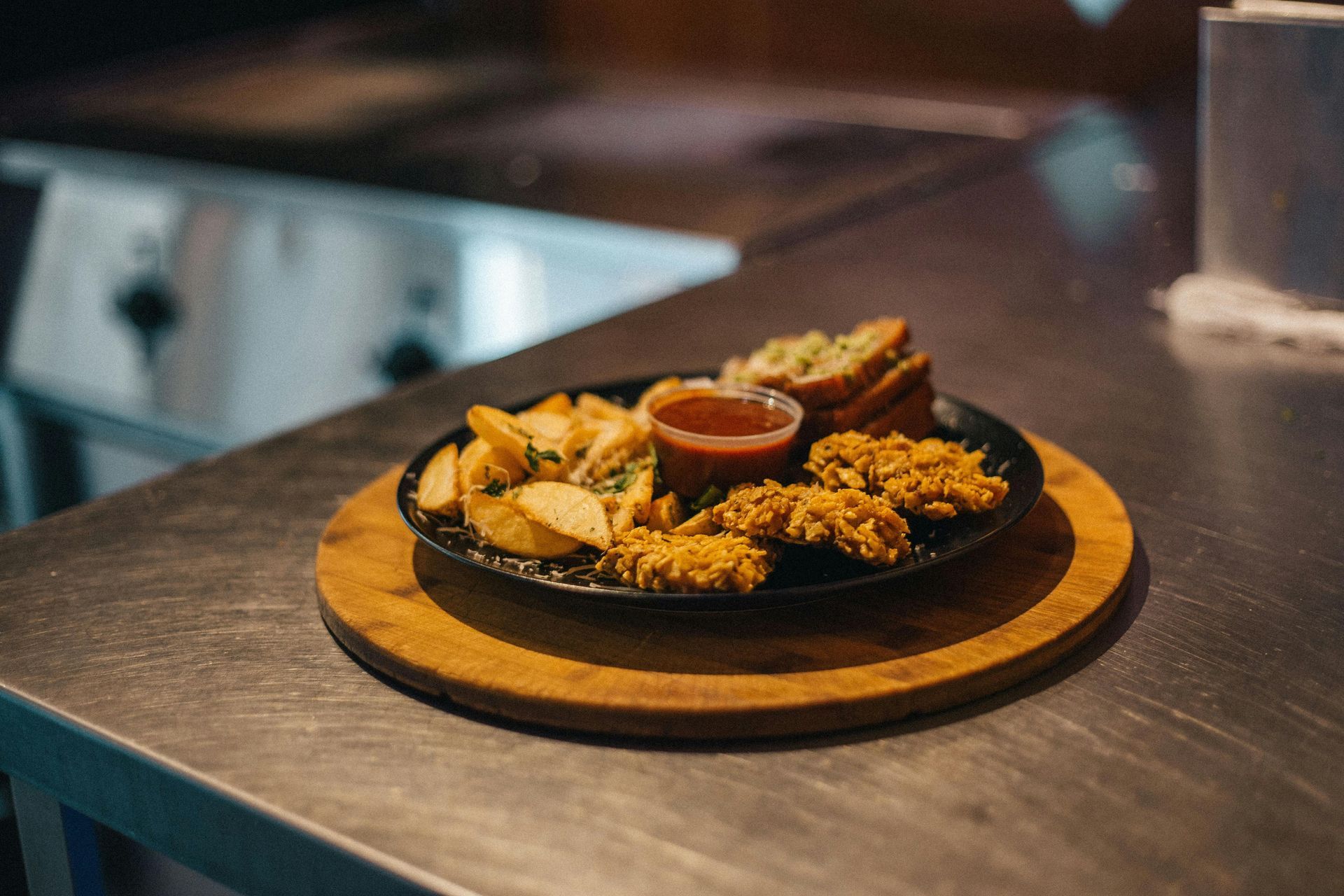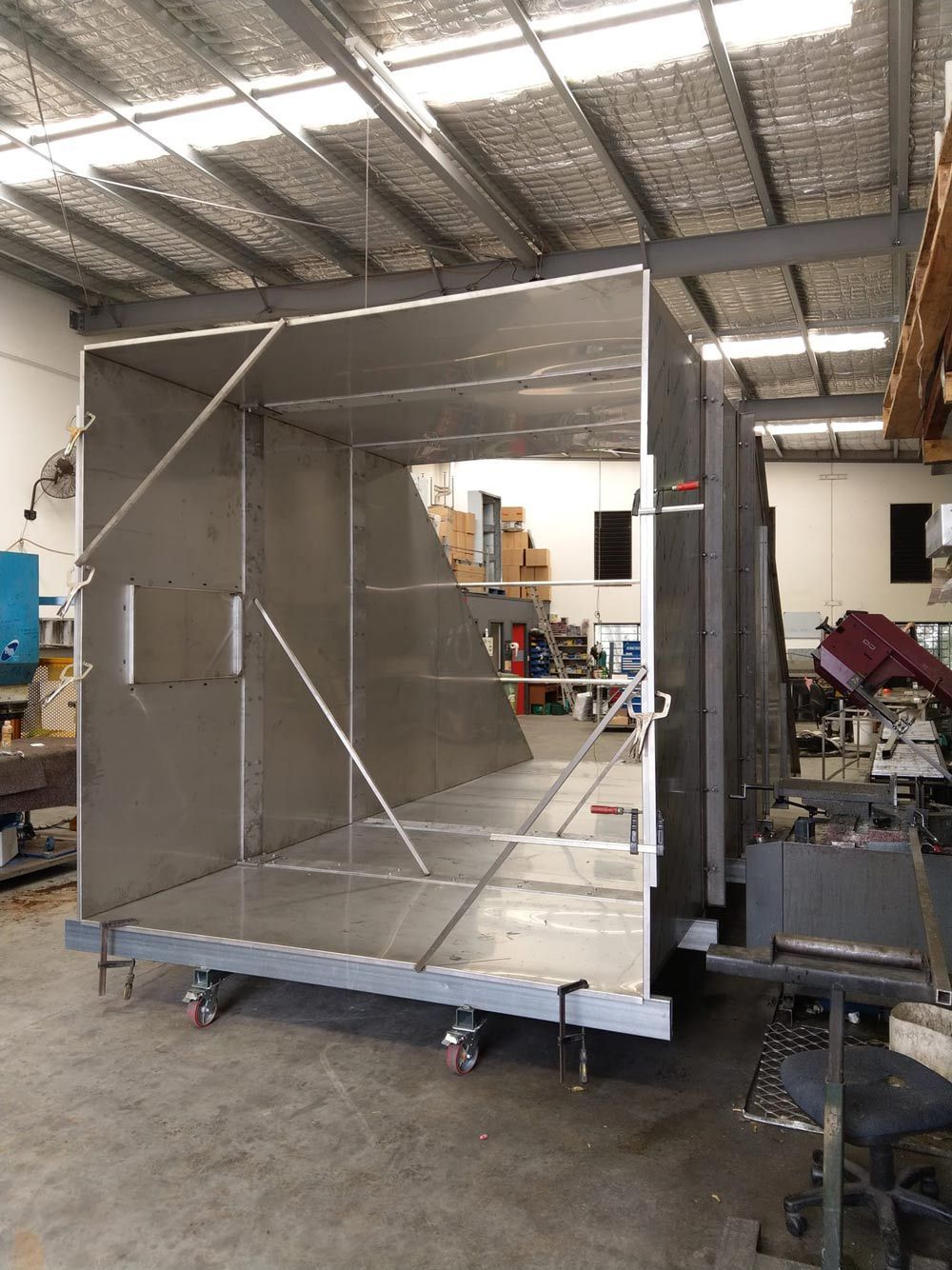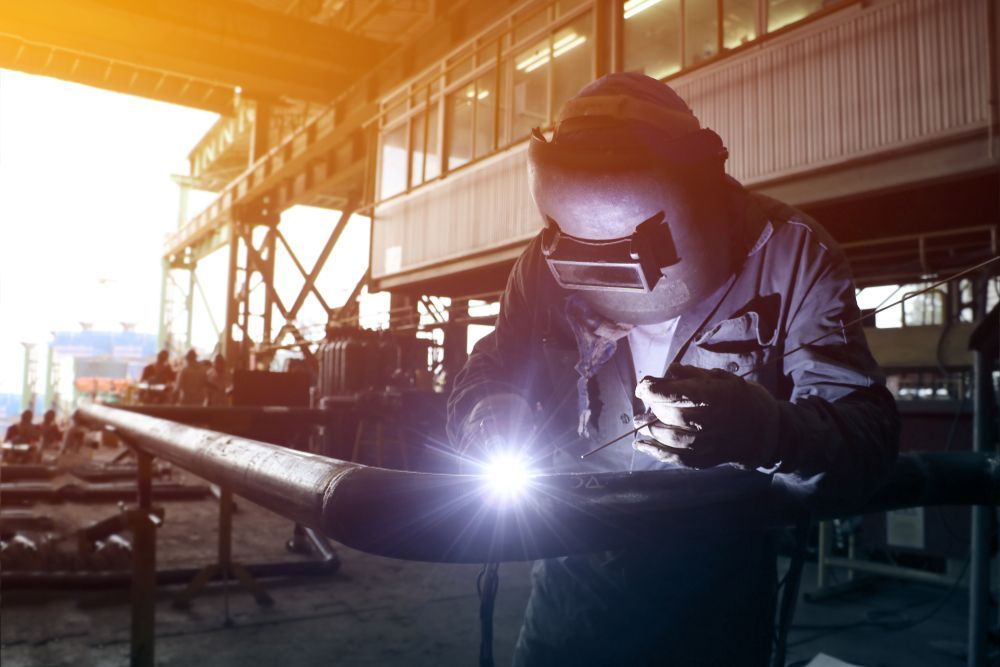Why Stainless Steel Is the Smart Choice for Commercial Kitchen Fit-Outs

Planning a commercial kitchen fit-out involves several important decisions, but few are as foundational as choosing the right materials for your surfaces and infrastructure. Whether you're designing a new cafe, upgrading a restaurant kitchen, or fitting out a catering facility, the materials you select play a significant role in performance, hygiene, and compliance.
Among all options, stainless steel consistently proves to be the preferred choice for commercial kitchen environments. In this blog, we’ll explore why stainless steel kitchens are widely used in the hospitality sector and why this versatile material remains the go-to for chefs, fit-out specialists, and food service operators.
Hygiene & Food Safety Compliance
Food safety is a top priority in any commercial kitchen. Surfaces must be easy to clean, non-porous, and resistant to bacteria, mould, and cross-contamination. Stainless steel excels in all of these areas.
Unlike wood or laminate, stainless steel does not absorb moisture or harbour bacteria. Its smooth, sealed surface allows for quick cleaning and sanitation, making it ideal for food preparation zones, sinks, benchtops, and splashbacks.
Stainless steel also complies with food safety regulations and is commonly used in kitchens that need to meet strict local council health standards and HACCP protocols. This makes it a practical and reliable choice for any food-handling environment.
Exceptional Durability & Strength
Commercial kitchens are high-intensity environments with constant activity, heat, spills, and heavy equipment. Stainless steel is built to handle this pressure. It is highly resistant to impact, heat, and wear, making it suitable for daily use without deteriorating.
This durability translates to long-term cost savings. Where other materials might crack, stain, or degrade over time, stainless steel retains its structural integrity and finish, even with continuous exposure to cooking processes, water, and cleaning agents.
The strength of stainless steel also means it can support heavy kitchen equipment, from commercial mixers to combi ovens, without warping or weakening. This is particularly important for structural items such as shelving, undershelves, and benchtops.
Corrosion Resistance In Demanding Environments
Humidity, water, steam, and cleaning chemicals are unavoidable in commercial kitchens. Materials that aren’t resistant to corrosion can degrade quickly, compromising hygiene and appearance.
Stainless steel’s natural resistance to rust and corrosion makes it a dependable choice for wet and steamy kitchen environments. This is especially beneficial in spaces with frequent wash-downs or in coastal areas where salt in the air can accelerate the deterioration of other materials.
With the right grade of stainless steel and fabrication process, your kitchen fit-out can remain clean, functional, and rust-free for many years.
Heat Resistance & Fire Safety
Cooking appliances generate high temperatures, especially around grills, ovens, and fryers. Materials used in these areas need to tolerate direct and radiant heat without breaking down or releasing toxins.
Stainless steel is non-combustible and has a high melting point, making it suitable for use around hot zones and exhaust systems. It doesn’t warp, discolour, or release harmful fumes when exposed to heat, contributing to a safer kitchen environment.
This makes stainless steel the preferred material for splashbacks behind cooking equipment, as well as for canopy and ducting systems that handle hot air and vapour.
Customisation To Suit Unique Kitchen Layouts
Every commercial kitchen has different spatial and workflow requirements. A bakery’s layout will differ from that of a sushi bar, cafe, or large-scale catering kitchen. Off-the-shelf solutions often fail to maximise space or support efficient movement in these varied settings.
Custom stainless steel fabrication offers flexibility that pre-made products can’t match. Benchtops can be tailored to fit into tight spaces, shelves can be built to match equipment heights, and corner sinks or underbench storage can be created to suit the available footprint.
This level of customisation helps improve functionality, reduce clutter, and support smoother workflows – all essential in busy kitchen environments.
Low Maintenance & Long-Term Value
Another key advantage of stainless steel is its low maintenance requirements. Its smooth, non-porous surface can be wiped clean easily, and it does not require sealing, painting, or special treatments.
Routine cleaning with warm soapy water is often enough to maintain its appearance, while any deeper cleaning for food prep zones can be completed with approved sanitisers. Stainless steel’s resistance to staining also keeps it looking sharp, even with heavy use.
Over time, this ease of maintenance supports a more cost-effective operation. Kitchen staff can clean surfaces faster, maintenance costs are reduced, and the need for replacements is minimised.
Comparing Stainless Steel & Aluminium in Commercial Kitchens
While stainless steel is the preferred material for high-contact and structural surfaces, there are situations where aluminium may be suitable in a commercial kitchen setting.
Aluminium is lighter and easier to move, making it a useful option for mobile trolleys, temporary shelving, or lightweight storage racks. It is also more affordable per square metre and easier to cut, which may be beneficial in less intensive applications.
However, aluminium does not offer the same level of hygiene, corrosion resistance, or strength as stainless steel. It can stain more easily, react with certain foods, and is more susceptible to dents and warping under pressure or heat.
For these reasons, aluminium is generally used for low-impact roles in commercial kitchens, while stainless steel remains the superior choice for benches, splashbacks, sinks, and exhaust systems.
Meeting Industry Standards Across Sectors
Stainless steel kitchen fit-outs are not limited to restaurants. They are also widely used in hospitals, aged care facilities, food manufacturing, school canteens, and mining camps – anywhere that hygiene, safety, and durability are required.
Choosing stainless steel in these environments helps meet compliance standards while supporting functionality and cleanliness across all levels of food production and service.
Fit-out specialists and facility managers often prefer stainless steel because it offers a consistent, high-performance result that meets operational and regulatory needs across sectors.
Book a Stainless Steel Consultation for Your Next Fit-Out
From cafes to aged care kitchens, stainless steel remains the most practical and long-lasting choice for commercial kitchen fit-outs. Its hygienic properties, resistance to corrosion and heat, and suitability for custom fabrication make it an ideal material across a wide range of industries.
At Sheetmetal Improvements & Design, stainless steel kitchen solutions are tailored to meet the specific needs of each space – offering custom fabrication, professional advice, and high-quality finishes that support compliance, efficiency, and durability. Contact the team today to discuss your commercial kitchen fit-out and explore stainless steel options built to suit your layout and workflow.







